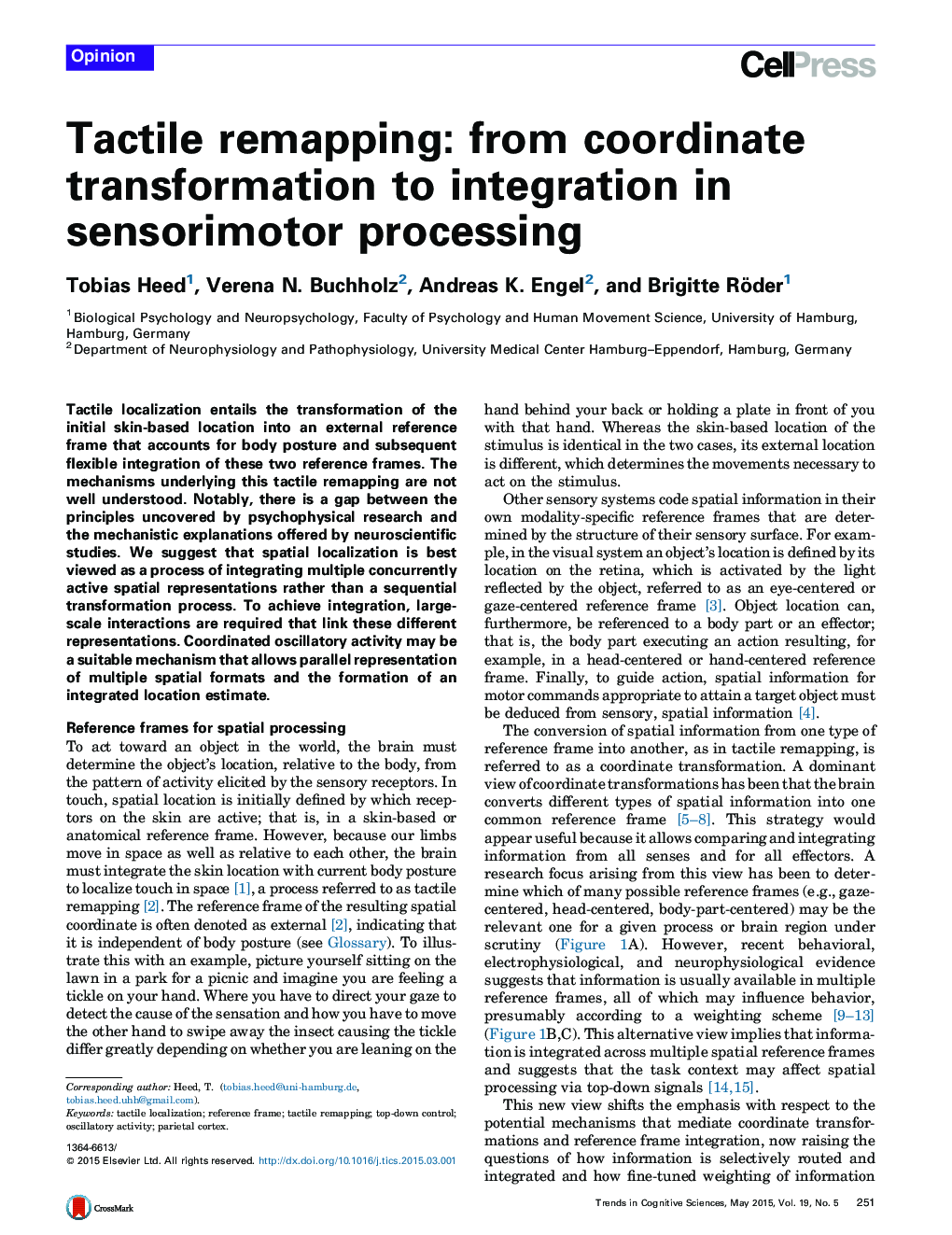| Article ID | Journal | Published Year | Pages | File Type |
|---|---|---|---|---|
| 141410 | Trends in Cognitive Sciences | 2015 | 8 Pages |
•Tactile location is concurrently represented relative to skin and external space.•Reference frames are flexibly combined for an integrated tactile location estimate.•Conflict between reference frames affects spatial integration, not transformation.•Large-scale oscillatory brain activity may be central for reference frame coding.
Tactile localization entails the transformation of the initial skin-based location into an external reference frame that accounts for body posture and subsequent flexible integration of these two reference frames. The mechanisms underlying this tactile remapping are not well understood. Notably, there is a gap between the principles uncovered by psychophysical research and the mechanistic explanations offered by neuroscientific studies. We suggest that spatial localization is best viewed as a process of integrating multiple concurrently active spatial representations rather than a sequential transformation process. To achieve integration, large-scale interactions are required that link these different representations. Coordinated oscillatory activity may be a suitable mechanism that allows parallel representation of multiple spatial formats and the formation of an integrated location estimate.
